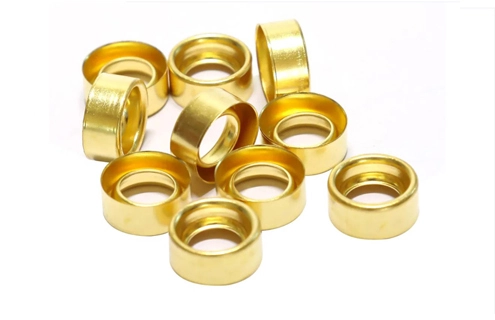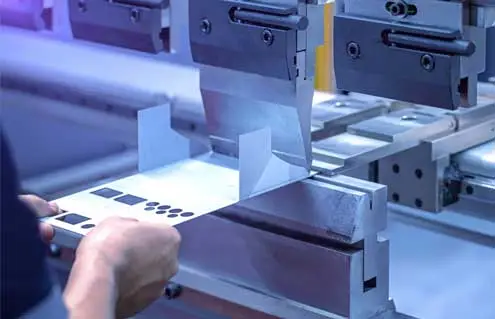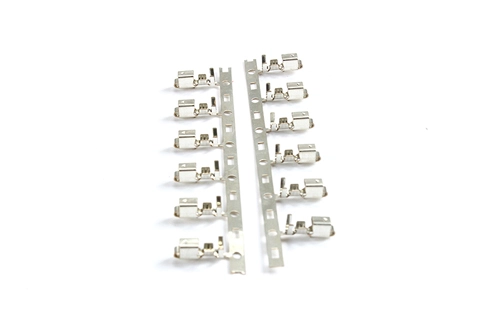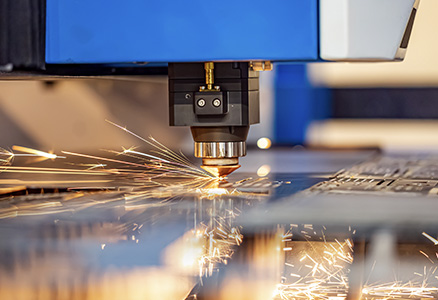Stainless steel is the most commonly used type of steel in design and manufacturing. It prevails because of outstanding mechanical property, durability and cost competitiveness. This is a comprehensive guide of the different types of stainless steel, you can understand their characteristics, grades, and applications after reading.
The Fundamentals
Stainless steel’s elements basic composition are as follow:
Chromium | 15-20% | Corrosion resistance purpose |
Nickel | 2-10% | No nickel in some ferritic and martensitic |
Molybdenum | 0-3% | Common in 316 stainless steel and duplex grades |
Manganese | 0-3% |
|
Silicon | 0-1% |
|
Carbon | 0.03-0.15% | Can be higher in martensitic |
Iron | 50-70% | Basic particles in steel |
Asides of iron and carbon, you can find chromium is the symbol in stainless steel, it is in the state of a passive layer of oxide on the metal’s surface which shields it from rust and corrosion. Speaking of other elements, nickel and manganese play an important role in austenite stabilizer, silicone is crucial deoxidizer, molybdenum significantly increases resistance to pitting and crevice corrosion and helps in maintaining a fine grain structure for its toughness.
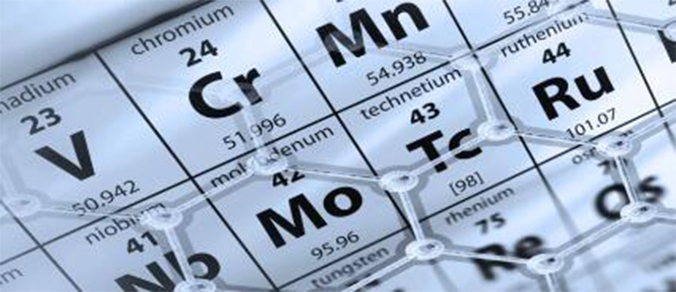
The compositions given above are in a very broad concept, you need to check the very specific numbers of different grades and standards in the metal handbook or consult experts. Here are some ideas from JCLDD sheet metal fabrication manufacturer about deep draw stainless steel.
Austenitic Stainless Steel
Definition
You need to first understand the definition of austenite; it's a type of iron-based solid solution with a face-centered cubic (FCC) structure. In this structure, iron atoms are positioned at each corner of the cube, while carbon, nickel, and manganese atoms occupy the center of the cube's faces. Under a microscope, you will see that the crystal structure of austenite appears roughly equal in all directions. This form is advantageous for the material's uniform deformation.
Austenitic stainless steel contains a high amount of chromium, about 18-20%, and nickel, about 8-12%. Chromium has a self-passivating effect because this element reacts with oxygen in the air to form a compound. This layer of relatively inert oxide prevents further oxidation reactions, thereby protecting the material inside from more chemical reactions. Meanwhile, nickel promotes the austenitic crystal structure at room temperature and is a commonly used stabilizer.
Applications
As mentioned earlier, stainless steel sheet metal fabrication, due to the presence of certain atoms, exhibits excellent corrosion resistance. This material is often used in harsh environments, such as maritime conditions, high-temperature and high-pressure situations, and in the mining industry.
In addition, it inherits the advantages of high strength, maintaining high mechanical strength while also having good ductility, you can make it easy to work with in metal processing. It also has very good weldability and formability. The presence of nickel atoms significantly reduces the possibility of hardening in the heat-affected zone during welding, thereby decreasing the likelihood of cracks forming along the weld line. Due to its micro atomic structure, austenitic stainless steel is non-magnetic. Therefore, it is often used in the manufacture of electronic and electrical equipment.
Grades
Grade 304/304L, where the "L" stands for low carbon, is the most common type of austenitic stainless steel. It has 18% chromium and 8% nickel, with a maximum carbon content of 0.08% for 304 and 0.03% for 304L. It's also referred to as 18/8 stainless steel. The 304 stainless steel is the most commonly used stainless steel, known for its excellent corrosion resistance and formability. You can use it to manufacture kitchen utensils, medical equipment, automotive bodywork, food packaging, and building materials.
Grade 316/316L has a chemical composition similar to 304 stainless steel. However, it contains molybdenum for enhanced corrosion resistance and is used in more corrosive environments. Because of this characteristic, 316 stainless steel is often used to make products that come into contact with the human body, such as wearable items, medical supplies, and metals implanted into the body. The low carbon content also helps to reduce the formation of chromium carbide during the welding process, which can lead to brittleness.
Grade 321 introduces titanium atoms in a quantity five times the carbon content, which is a bold move. First, you know that titanium has a very high melting point, so introducing it significantly increases the melting point of 321 stainless steel. Secondly, titanium atoms combine with carbon atoms in the solid solution to form titanium carbide, reducing the carbon content in the solid solution, therefore decreasing the reaction of the atoms to form chromium carbide. This series of reactions ensures an abundance of chromium atoms, stabilizing the overall corrosion resistance of the material.
Ferritic Stainless Steel
Definition
Ferrite is a crystal structure composed of oxygen, iron atoms, and other elements mixed together. Unlike the crystal structure of austenite, ferrite has a body-centered cubic (BCC) structure, in which you may find that each cube's body center (the center of the cube) and corners each have one atom. The body-centered cubic structure is simpler and the atoms are more loosely arranged. Ferritic stainless steel has a chromium content ranging from 10% to 30%, so it also possesses excellent corrosion resistance, much like austenitic stainless steel. Ferritic stainless steel is magnetic; its crystal structure allows the unpaired electrons in iron to align their spins, thereby producing magnetism.
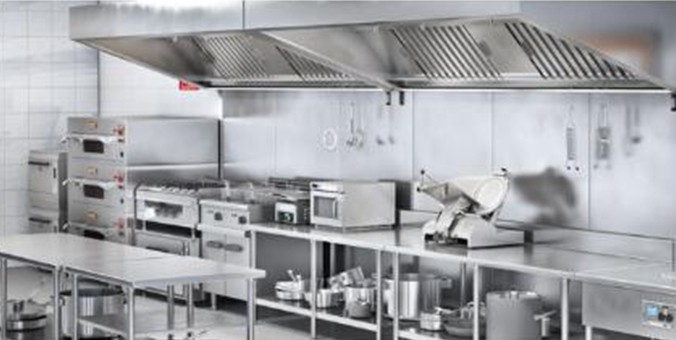
Applications
You can take advantage of the magnetism of ferritic stainless steel to manufacture special products such as generators, sensor components, and electromagnetic devices. This way, you can obtain both magnetism and superior mechanical strength. Additionally, like austenitic stainless steel, it is often used in industrial metal stamping, like household appliances, automotive parts, and electrical products. Metal stamping stainless steel maintains sufficient stability under high temperatures or high-stress conditions. Its characteristics of stability, uniform heat conduction, and a low coefficient of thermal expansion make it a stable choice of metal material.
Grades
Grade 430 is known for its 16-18% chromium content and does not contain nickel. It is slightly less expensive than austenitic stainless steel, but with comparable performance, and you can use it to make metal decorations, home appliances, kitchen utensils, and automotive structural parts.
Grade 409 contains 10.5-11.75% chromium and a small amount of nickel. It is recognized for its addition of titanium, it can stabilize the carbon to prevent carbide precipitation. The introduction of titanium improves its performance at high temperatures, so it is often used to make ovens, heating equipment, or other products that are exposed to high temperatures.
Grade 434 stainless steel is similar to 430 but includes molybdenum to increase corrosion resistance. Its enhanced corrosion resistance makes it suitable for applications that demand higher performance than what you expected from 430 stainless steel.
Martensitic Stainless Steel
Definition
Martensite is formed when a metal is heated to austenitic temperatures and then rapidly cooled. You can imagine that at near thousand-degree high temperatures, atoms cannot arrange into the most stable state but are trapped in an overcooled and thus deformed shape, creating a very hard and brittle martensitic structure. From the metal phase diagram, you can see that austenite transforms into ferrite after uniform cooling. However, if austenite doesn't have enough time to rearrange into ferrite through diffusion, martensite is formed. Therefore, martensite is a deformed crystal structure, highly uneven, and the twisted microstructure results in significant internal stress, thus creating high hardness. Under a microscope, you'll see martensite interspersed like pine needles among iron atoms, restricting the movement of a large number of iron atoms. Martensitic stainless steel has a higher carbon content, with lower amounts of chromium and nickel elements. Carbon can adjust its hardness and toughness through heat treatments such as quenching or tempering, which makes it excellent in wear resistance.
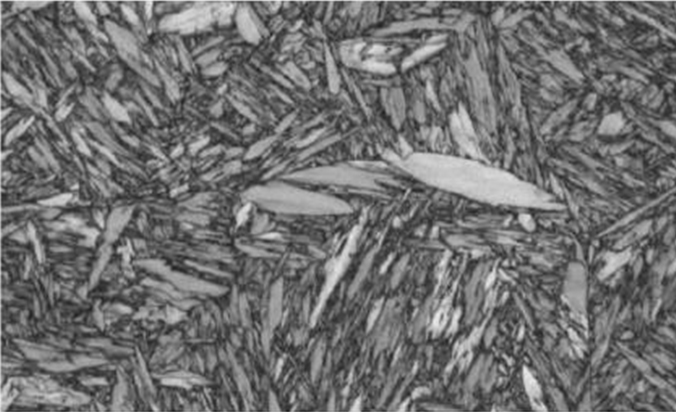
Applications
Due to its high hardness and strength, martensitic stainless steel is often used to make cutting tools, bearings, valves, and other mechanical parts. However, too much hardness can make the material too brittle, so you need to perform heat treatments to balance its properties. Its corrosion resistance is not as good as that of austenitic stainless steel, and similar to ferritic stainless steel, it is magnetic.
Grades
Grade 410 is one of the most common martensitic stainless steels, containing about 12% chromium. It has good corrosion resistance and mechanical properties, which you can enhance with heat treatment. It's typically used for cutlery, pumps and valves, shafts, kitchen utensils, and more.
Grade 420 has a higher carbon content, providing greater hardness, especially after heat treatment. This steel is commonly used in the manufacture of surgical instruments and other applications that require sharp edges.
Grade 440 includes 440A, 440B, and 440C, with the carbon content increasing with the letter suffix, thus offering higher hardness. 440C is the most commonly used in the series because it provides the best hardness and corrosion resistance, often used for high-quality blades, medical instruments, and other wear-resistant applications.
Duplex Stainless Steel
Definition
Duplex stainless steel contains a 1:1 mix of two microstructures: austenite and ferrite. These two crystal structures typically form an interlocking network, with austenite embedded within a continuous ferritic matrix. The material's crystal boundaries are distinct and evenly sized, maintaining stable performance. Duplex stainless steel contains higher levels of chromium, nickel, and molybdenum and common heat treatments include annealing and aging processes.
Applications
Due to its special microstructure, duplex stainless steel exhibits strength that is double that of the individual austenite or ferrite. Therefore, it is often used in heavy industries like petrochemicals, taking on tasks that are more demanding than those handled by single-phase stainless steel.

Grades
Grade 2205 has a composition of roughly 22% chromium, 5% nickel, and 3% molybdenum. It has less stress corrosion cracking and maintains high strength and resilience to corrosion in oil and gas exploration, chemical processing, and the transport and storage sectors.
Grade 2507 has contents of 25% chromium, 7% nickel, and 4% molybdenum with significant corrosion resistance and robust mechanical properties. It is an ideal choice for the chemical process industry, marine environments, and infrastructure.
Zeron 100 is a trade name by Rolled Alloys. It is a robust alloy with a composition that includes 25% chromium, 7% nickel, and 3.5% molybdenum. It has greater strength and toughness than 2205 and 2507. Mostly used in harsh places with high chloride concentration and acidic conditions.
Choosing the Right Stainless Steel
There are many and varied types of stainless steel. Based on the material structure and different standards and grades, there are various classification methods. If you need to select the right type of stainless steel for the design and manufacturing of your product, it's advisable to start with your personal requirements to establish related specifications and standards. Consider factors like the product's maximum strength, service life, surface hardness, and more. You can also choose based on your usage environment: what temperatures it involves, whether there are any strong corrosive substances present, the pressure conditions of the parts, and whether the product needs to be magnetic. You can find the technical parameters for each type of stainless steel in metal handbooks or online databases, also the knowledge of how to heat treat the materials. People have been using stainless steel for nearly a hundred years and have accumulated a wealth of usage data for your reference. This is a solid foundation to ensure the smooth progress of your project.
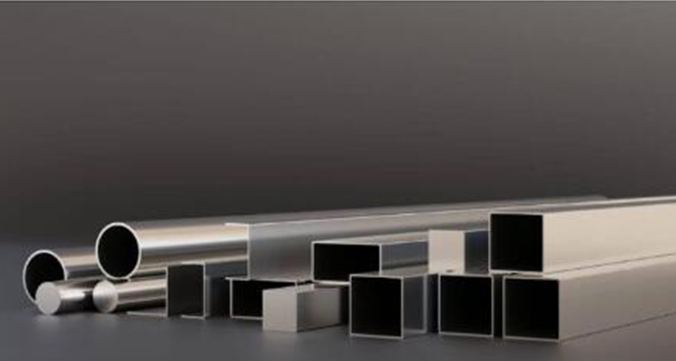
Conclusion
This article has detailed the basic principles of stainless steel, its main categories, and common applications. You're likely beginning to understand how to use stainless steel more deeply. Application of stainless steel is very important in today's manufacturing technologies. Essentially, you can see stainless steel present in nearly every product to some extent. Based on the tips from this article and some hands-on practice, you'll become an expert in this field. You can also consult with our company; we will provide the most comprehensive stainless steel processing solutions.






